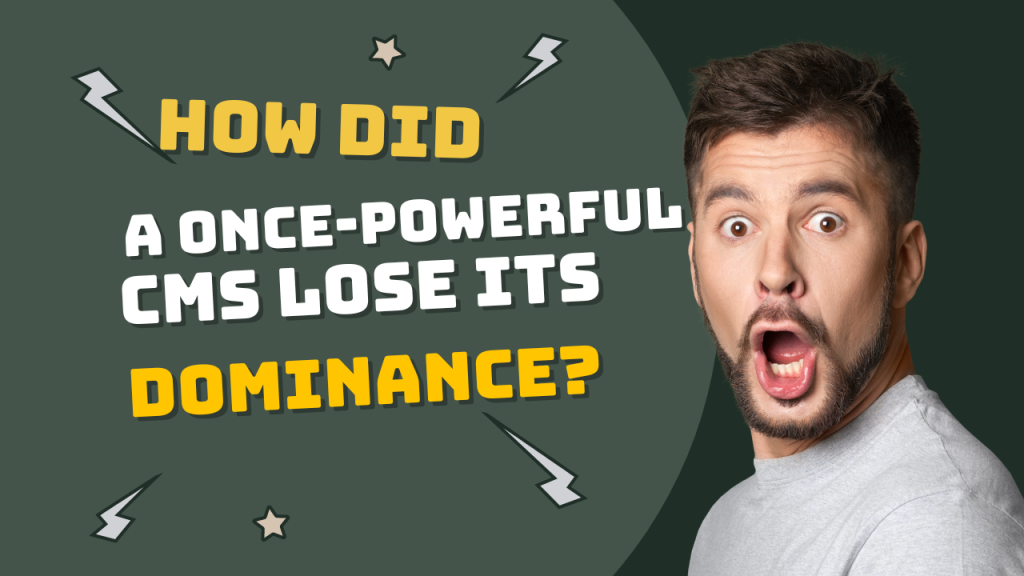When I started my career in web development back in 2010, Joomla was one of the key platforms I used for building websites. As a freelancer working part-time, I had the chance to experiment with different content management systems (CMS), especially for eCommerce. Joomla stood out to me for its flexibility and advanced features. Alongside Joomla, I also frequently used ZenCart, another popular open-source eCommerce CMS that seemed poised for long-term success. Both platforms allowed me to deliver customized, powerful online stores for my clients.
By 2012, my freelancing career took off, and I went full-time, focusing primarily on building eCommerce websites. Back then, Joomla and ZenCart were my go-to platforms for online stores. Joomla was perfect for clients needing complex websites with multi-language support and custom functionalities. ZenCart, on the other hand, catered specifically to eCommerce with a focus on product management and store features. Both systems seemed like they were here to stay.
However, as my career progressed, I noticed both Joomla and ZenCart started showing signs of decline. WordPress, which had been mainly a blogging platform, was rapidly evolving, and WooCommerce was gaining traction in the eCommerce space. The demand for simplicity, scalability, and ease of use quickly outpaced the capabilities of Joomla and ZenCart, leading to their eventual fall from prominence.
Why Joomla and ZenCart Were Once Top Choices
In the early days of my freelancing career, Joomla and ZenCart were essential tools for building professional-grade websites and eCommerce stores. Joomla offers an advanced framework for creating highly customized websites. Its modular design, along with a large developer community, made it easy to build everything from corporate sites to fully functional online stores. It was especially ideal for clients who wanted complete control over their site’s design and structure.
ZenCart, on the other hand, was a specialized eCommerce platform. Its out-of-the-box features appealed to business owners focused on selling products. With ZenCart, I could quickly set up product catalogs, integrate payment gateways, and customize store layouts. It offered everything my clients needed to run a successful store without the unnecessary bloat of other CMS platforms.
However, both platforms had their downsides. Joomla, while powerful, was complex and difficult for non-technical clients to manage. ZenCart, although great for basic stores, lacked the flexibility and integration that modern eCommerce solutions would soon offer. Over time, it became clear that my clients wanted simplicity and less reliance on developers to manage their sites.
The Rise of WordPress and the Decline of Joomla and ZenCart
By 2012, WordPress was no longer just a blogging tool—it had become a full-fledged CMS. The introduction of WooCommerce was a game changer for freelancers like me. WooCommerce combined the simplicity of WordPress with robust eCommerce features, making it a perfect solution for businesses of all sizes. Suddenly, I could offer clients an easy-to-manage website and online store in one platform, without the steep learning curves of Joomla and ZenCart.
As more of my clients requested WordPress-based solutions, I started transitioning away from Joomla and ZenCart. Joomla’s complex update process and frequent compatibility issues became major pain points. Every time Joomla released a new version, migrating my clients’ sites felt like rebuilding them from scratch. ZenCart, too, struggled to evolve with modern eCommerce demands. Its plugin ecosystem was limited, and it became harder to integrate third-party tools, something that WooCommerce excelled at.
What ultimately sealed the fate of both Joomla and ZenCart in my workflow was the demand for user-friendly platforms. WordPress had an intuitive interface that allowed clients to manage their sites and stores without relying on a developer for every small change. Joomla and ZenCart, meanwhile, required constant developer intervention. This made WordPress and WooCommerce far more attractive to my clients, who wanted to spend more time running their business and less time troubleshooting their website.
The Missed Opportunity of Joomla 3
When Joomla 3 was released in 2012, I hoped it would solve some of the problems I had been facing with the platform. Joomla 3 introduced a more modern interface, better mobile compatibility, and improved usability, all of which were much-needed updates. I was excited about the new version and optimistic that Joomla would regain its lost ground. But despite these improvements, Joomla’s resurgence came too late.
By the time Joomla 3 hit the market, WordPress had already taken the lead. WooCommerce was dominating the eCommerce space, and WordPress itself had become a household name. While Joomla 3 was a step in the right direction, it didn’t solve the fundamental issue: Joomla was still too complex for the average business owner to manage on their own. My clients continued to prefer WordPress for its simplicity and flexibility, leaving Joomla behind.
ZenCart faced a similar fate. Despite being a solid platform for small eCommerce sites, ZenCart failed to keep pace with the rapidly evolving eCommerce landscape. As newer platforms like Shopify and WooCommerce took center stage, ZenCart’s lack of innovation became its downfall. Its community dwindled, and fewer developers were building plugins or extensions to keep the platform competitive. Over time, I stopped recommending ZenCart entirely, as it couldn’t match the flexibility or ease of use offered by newer eCommerce solutions.
Transitioning to WordPress and WooCommerce
By 2014, I had fully transitioned to using WordPress and WooCommerce for my clients’ websites. The combination of WordPress’s powerful CMS features and WooCommerce’s robust eCommerce capabilities made it the perfect solution for the growing demand I was seeing from online businesses. Clients were happier with the simplicity of WordPress, and I could offer them more flexible and scalable solutions without the constant headaches that came with Joomla or ZenCart.
Moving clients from Joomla and ZenCart to WordPress was one of the best decisions I made as a freelancer. Not only did it streamline my workflow, but it also allowed my clients to take more control over their websites and stores. With WooCommerce, they could easily manage products, track orders, and integrate marketing tools—all without needing a developer’s help for every small change.
Looking back, Joomla and ZenCart served their purpose well during the early years of my career. They were powerful, flexible, and customizable, making them perfect for complex projects. However as the web development landscape evolved, they failed to adapt quickly enough. The rise of WordPress and WooCommerce showed me that simplicity, ease of use, and scalability are just as important as power and flexibility in today’s market.
Final Thoughts
For freelancers like myself, Joomla and ZenCart were once indispensable tools for building websites and online stores. However, their complexity and failure to adapt to changing market demands led to their decline. WordPress and WooCommerce, with their balance of simplicity and power, have become the go-to platforms for e-commerce development.
If you’re a freelancer or a business owner still using Joomla or ZenCart, it might be time to consider whether they are still the right platforms for your needs. The rise of WordPress and WooCommerce has shifted the landscape, offering better solutions for today’s online businesses. As technology continues to evolve, staying agile and choosing platforms that can grow with you is key to long-term success.








































